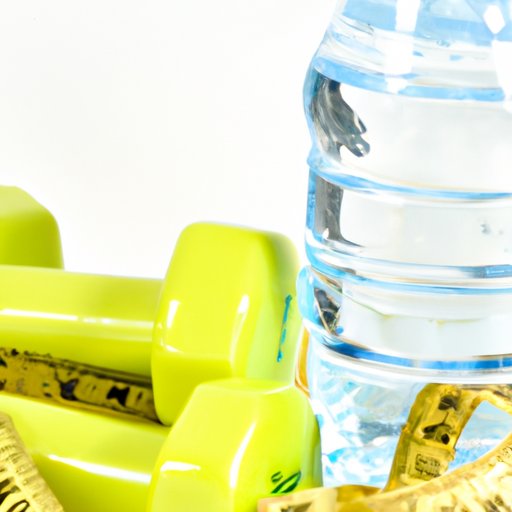
I. Introduction
Water weight is a common issue that affects many people, often resulting in feelings of bloating and discomfort. It’s important to know that water weight is not the same as fat and can be easily addressed with a few lifestyle changes. The purpose of this article is to provide tips for reducing water weight and promoting a healthier life. Whether you’re looking to slim down for an event or just feel more comfortable in your body, this article is for you.
II. Understanding Water Weight
Water weight is caused by the accumulation of excess fluid in the body’s tissues. This can be a result of various factors including consuming a high-sodium diet, hormonal changes, or certain medications. It is important to note that water weight is not the same as fat and can be lost quickly with the proper adjustments to diet and lifestyle.
Excess water weight can cause physical discomfort such as bloating and swelling and may also impact the appearance of skin and muscle definition. In some cases, water weight can be an indication of a serious underlying health issue. It is important to consult a medical professional if you are experiencing excessive or sudden changes in weight.
III. Importance of Hydration and Water Weight
The importance of hydration cannot be stressed enough when it comes to reducing water weight. When the body is dehydrated, it may hold onto excess water as a defense mechanism, resulting in bloating and discomfort. Drinking enough water also helps to flush out excess sodium from the body.
The recommended daily water intake varies based on age, sex, and lifestyle, but as a general rule, it’s important to drink eight 8-ounce glasses of water per day. Drinking enough water can also aid in digestion, promote healthy skin, and prevent headaches.
IV. Reducing Sodium Intake
Consuming a high-sodium diet can cause water retention in the body, resulting in bloating and discomfort. It’s important to monitor sodium intake and avoid processed foods that are often high in sodium. Opt for fresh, whole foods and avoid adding salt to your meals.
Reducing sodium intake can be challenging at first, but it’s important to remember that the body only needs a small amount of sodium to function properly. Using alternatives such as herbs and spices can add flavor to your meals without the added sodium. Additionally, there are many sodium-free substitutes available on the market.
V. Diuretic Foods
Diuretic foods are natural diuretics that can help flush excess fluid from the body, reducing water weight. Incorporating these foods into your diet can be an effective way to reduce bloating and promote healthy weight loss. Some examples of diuretic foods include cucumber, celery, watermelon, and tomatoes.
Including diuretic foods in your daily diet can be as simple as adding slices of cucumber to your water or swapping a bag of chips for a sliced up watermelon. Additionally, some herbal teas such as dandelion tea have natural diuretic properties and can be a pleasant addition to your hydration routine.
VI. Regular Exercise Routine
Regular exercise is an essential component of a healthy lifestyle and can also help reduce water weight. Exercising promotes blood flow throughout the body, which can aid in reducing swelling and inflammation. Additionally, exercise can promote sweating, which helps to flush excess water from the body.
Incorporating exercise into your daily routine can be fun and rewarding. Popular activities such as swimming, jogging, and cycling are great options for reducing water weight. Weightlifting can also be effective as it increases blood flow to the muscles and reduces inflammation.
It’s important to remember to start slowly and gradually build up to a routine that suits your needs and fitness level. The recommended frequency of workouts is 150 minutes per week of moderate aerobic activity or 75 minutes per week of vigorous aerobic activity.
VII. Monitoring Progress and Setting Achievable Goals
Tracking progress and setting achievable goals is an effective way to stay motivated and on track when it comes to reducing water weight. By setting realistic goals and tracking progress, it becomes easier to make lifestyle adjustments and see results over time.
Strategies such as keeping a food and exercise journal and taking progress photos can be valuable tools in monitoring progress. Additionally, setting achievable goals such as drinking an extra glass of water per day or incorporating a new exercise routine into your week can help promote healthy habits.
VIII. Conclusion
In conclusion, reducing water weight is an achievable goal for anyone looking to live a healthier lifestyle. By understanding the causes of water weight and implementing lifestyle changes such as increasing hydration, reducing sodium intake, incorporating diuretic foods, regular exercise, monitoring progress, and setting achievable goals, it becomes easier to achieve and maintain a healthy weight. Remember to be patient with yourself and celebrate small victories along the way.
By taking these steps, you can learn to manage water weight and enjoy the benefits of a healthier body and mind. Stay motivated and keep working towards your goals to achieve optimal health.




